- NEW: Once dawn breaks in Philippines, military helicopters will take aerial survey
- NEW: Haiyan is downgraded to typhoon, but it could return to super typhoon Saturday
- "Around 20" people drown after storm surge, state news agency says, citing TV reports
- The storm is one of the strongest ever observed
Are you in the affected area? Send us images and video, but please stay safe.
(CNN) -- As dawn approached the Philippines on Saturday, the devastation of Super Typhoon Haiyan is expected to become better known a day after the storm -- perhaps the strongest ever -- rampaged across the central isles of the archipelago.
An early report indicated at least three people were killed and seven hurt, the National Disaster Risk Reduction and Management Council said Friday.
The destruction is expected to be catastrophic. Storm clouds covered the entire Philippines, stretching 1,120 miles -- equal to a distance between Florida and Canada. The deadly wind field, or tropical storm force winds, covered an area the size of Montana or Germany.
The typhoon first roared onto the country's eastern island of Samar at 4:30 a.m. Friday, flooding streets and knocking out power and communications in many areas of the region of Eastern Visayas, and then continued its march, barreling into five other Philippine islands.
Then, predawn Saturday, it headed toward Vietnam.
Haiyan weakened Saturday and was no longer a super typhoon, rather a typhoon with sustained winds of 230 kph (145 mph). But the storm could return to super typhoon status Saturday. The center of Haiyan will land again Sunday morning near the Vietnamese cities of Da Nang and Hue.
Philippine military helicopters were scheduled to take aerial surveys of the damage Saturday. Meanwhile, Haiyan was over the South China Sea on Saturday morning.
Photos: Major storms of the last 10 years
Tweets from @CNNmultimedia/hurricane-coverage
The state-run Philippines News Agency, citing unconfirmed TV reports, said "around 20" people drowned after a storm surge struck Friday morning in Palo, a town on the island of Leyte, which abuts Samar.
"Most of the fatalities sustained massive injuries in the head and upper part of the body, indicative that strong waves dashed them against hard objects," it reported, adding that nine of the dead were minors.
Experts predicted the casualty toll would soar once aid workers get to the hardest-hit areas, many of which were totally isolated -- no phone service, no electricity.
About 125,000 people took refuge in evacuation centers, and hundreds of flights were canceled.
With sustained winds of 315 kph (195 mph) and gusts as strong as 380 kph (235 mph), Haiyan may be the strongest tropical cyclone to hit land anywhere in recorded history. It will take further analysis after the storm passes to establish whether it is a record.
The Saffir-Simpson Hurricane Wind Scale describes winds of 252 kph (157 mph) or higher as capable of causing catastrophic damage. "A high percentage of framed homes will be destroyed, with total roof failure and wall collapse. Fallen trees and power poles will isolate residential areas. Power outages will last for weeks to possibly months. Most of the area will be uninhabitable for weeks or months."
Haiyan was on a westward track when it raced into Samar traveling at 41 kph (25 mph), which meant the worst was over quickly. But the damage was severe. "About 90% of the infrastructure and establishments were heavily damaged," Gwendolyn Pang, the secretary general of the Philippine National Red Cross, told CNNI.
By early Saturday, the speed had dropped slightly, to 37 kph (23 mph).
About 25 areas in the Philippines were hit, Pang said, adding that assessment teams were prepared to enter the stricken areas as soon as conditions allowed.
But they cannot do it alone, she said: "We will be definitely needing more support for this one."
She said floodwater was as high as 10 feet in some areas.
Track the typhoon
Maryann Zamora, a field communications specialist for the charity World Vision, said her organization "has been working through so many disasters, so many typhoons -- but this is quite different."
"This is the strongest I ever felt so far," she said by phone from the island of Cebu.

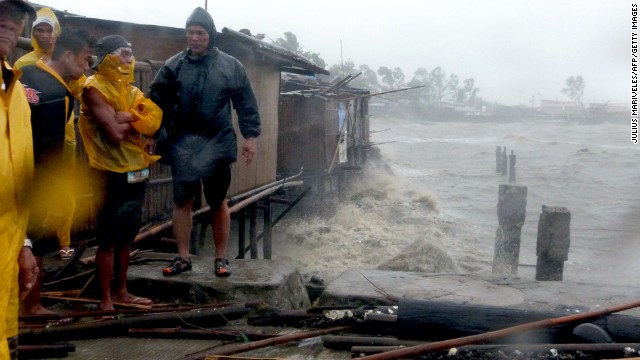
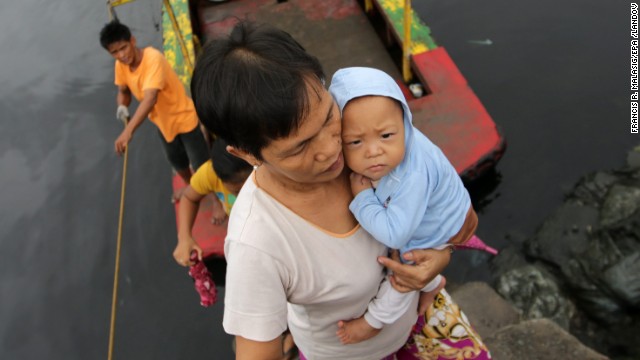
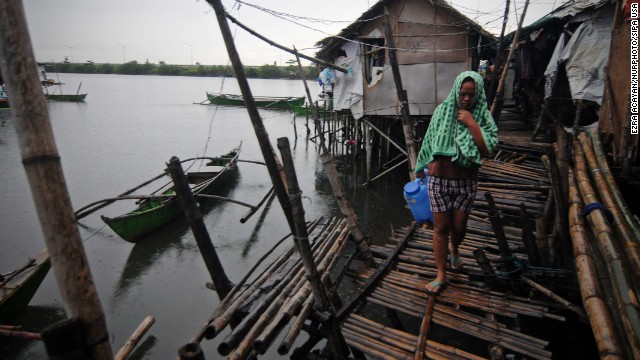
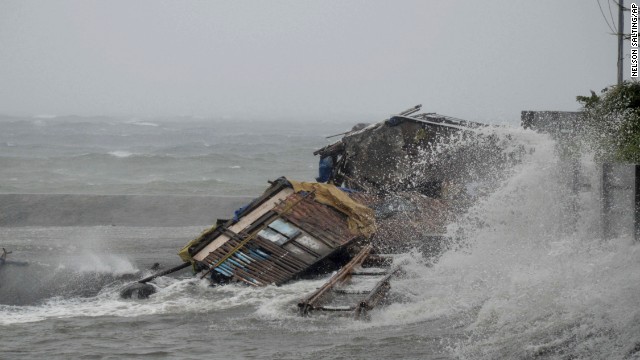
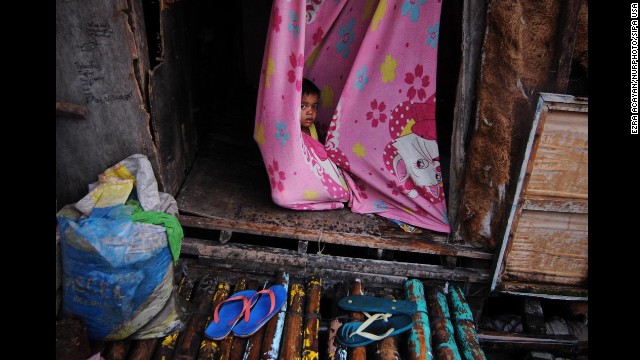

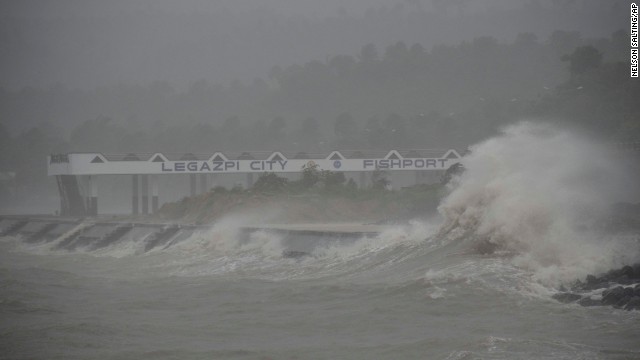

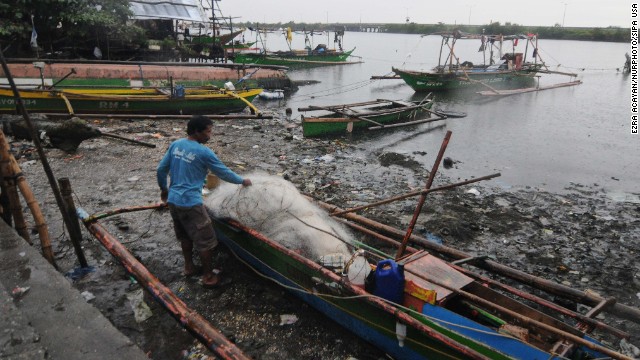
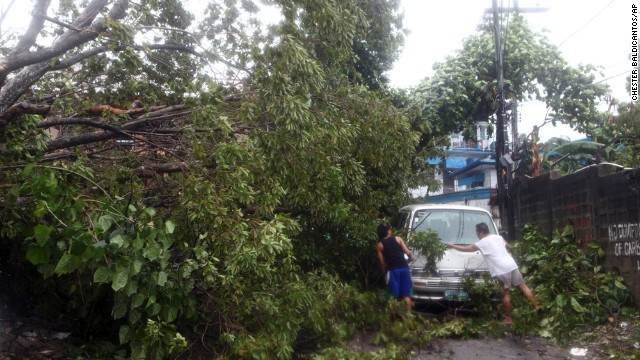
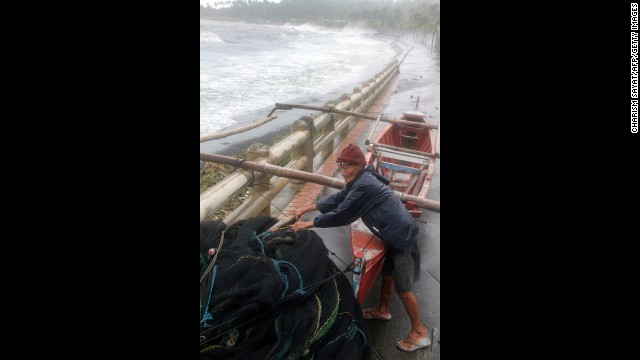
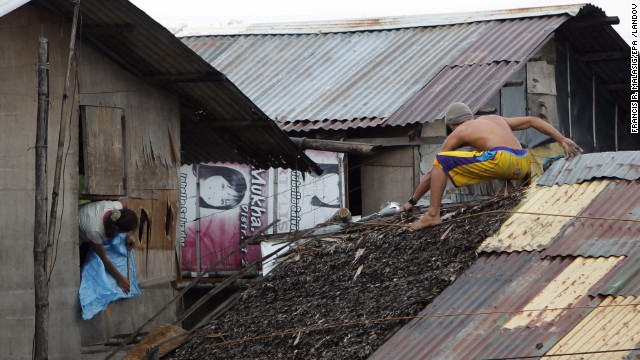

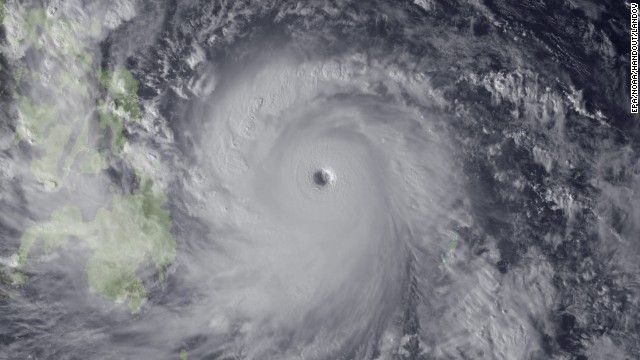




1

2

3

4

5

6

7

8

9

10

11

12

13

14

15

16

17


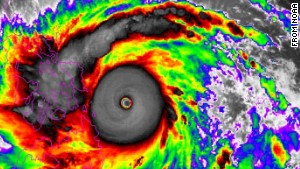



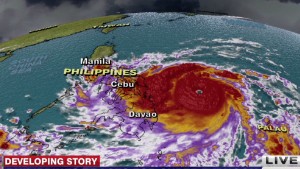
Category 5 strength
Haiyan, known in the Philippines as Yolanda, retained much of its force as it moved westward Friday with sustained winds of 295 kph (183 mph), which put it well above the 252 kph threshold for a Category 5 hurricane, the highest category on the Saffir--Simpson scale.
Video showed streets flooded with debris and sheets of metal flying through the air.
Gov. Roger Mercado of Southern Leyte, a province in Eastern Visayas near the storm's path, said Friday morning that fallen trees had made all roads impassable. "We don't know the extent of the damage," he said. "We are trying to estimate this. We are prepared, but this is really a wallop."
With sea travel suspended in many areas, more than 3,000 travelers were stranded in ports, the council said.
Meteorologists said it maintained super typhoon intensity throughout its passage over the Philippines. A super typhoon has surface winds that sustain speeds of more than 240 kph (149 mph) for at least a minute, according to the U.S. National Oceanic and Atmospheric Administration.
Haiyan was so large in diameter that, at one point, its clouds were affecting two-thirds of the country, which stretches more than 1,850 kilometers (1,150 miles). Tropical storm-force winds extended 240 kilometers (149 miles) from the typhoon's center.
iReport: Heavy rains as Philippines braces for typhoon
'Very real danger'
Ahead of the typhoon's arrival, thousands of people were moved from particularly vulnerable areas in the city of Tacloban, which is in a coastal area of the region that bore the initial brunt of the storm.
Communications with Tacloban, which has a population of around 200,000 on the island of Leyte, were disrupted; video aired by CNN affiliate ABS-CBN showed streets in the city filled with water and debris.
Haiyan arrived with notice. In a speech Thursday, President Benigno S. Aquino III warned residents of the "calamity our countrymen will face in these coming days" and urged them to prepare.
Authorities had aircraft ready to respond, and officials had placed relief supplies in the areas that were expected to get hit, Aquino said.
Earthquake survivors vulnerable
Authorities warned of possible flash floods, landslides and a storm surge as high as 7 meters (23 feet). About 125,000 people nationwide were moved to evacuation centers.
Among the most vulnerable were people living in tents on the central Philippine island of Bohol, where a 7.1-magnitude earthquake hit last month, killing at least 222 people, injuring nearly 1,000 and displacing about 350,000, according to authorities.
On Friday, they got a second jolt -- this time from the typhoon's winds and rain, but they were spared a direct hit.
"For the past three weeks, people are still experiencing aftershocks," said Aaron Aspi, a communications specialist in Bohol for World Vision. "And at the same time, these rains are giving them a really hard time."
Aspi said that despite living in drenched tents, many people were afraid to move to sturdier structures because of the aftershocks.
Beach resort threatened
Another island near the storm's path was the popular beach resort of Boracay. Some tourists there cut short vacations Thursday to get away from the possible danger.
In an area of the Pacific Ocean where tropical cyclones form, the Philippines routinely endures severe storms.
An average of 20 typhoons hit the nation every year.
In December, Typhoon Bopha wreaked devastation on the southern Philippine island of Mindanao. The storm, the most powerful to hit the country last year, is estimated to have killed as many as 1,900 people.
CNN's Aliza Kassim, Karen Smith, Elwyn Lopez, Judy Kwon, Taylor Ward, Brandon Miller, Ivan Cabrera and Mari Ramos contributed to this report.
